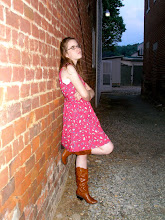"Print media is dying out, you know.” That's almost always the first response I get when I explain that I'm a journalism major. While there is definitely some amount of truth to that statement, as a print emphasis student, I have to push back a bit.
One of the excellent things about the direction print has taken is a tendency to use the internet to more clearly describe a story. It is highly intriguing to see the differences between the print and internet versions of The New York Times. It is also interesting to notice the difference between separate papers, but that comes later.
Both the internet and physical print editions of the paper have their own benefits and drawbacks. For instance, when you pick up the print copy of the NYT, it feels tangible. The stories are arranged on the front page in a way that tells you what should be most important. In contrast, the stories online are just listed, with much less separation.
With the physical paper, reading a story briefly is much easier. The lede is right there for you to see, making it more effective. However, online, less is available at a glance. Instead, the reader must click on the link to find more information.
The best feature about the internet, though, is the amazing amount of variety in mediums available. Through a plethora of pictures and video, even more of each story is told besides simply the print. For example, in Friday's paper, the Fort Hood story was the main story on the front page. The article had a huge center photo to grab attention, but very little beyond that. Online, the story contains quick links to other stories as well as photographs, a map and video.
When you read the NYT every day and frequent their website numerous times throughout the day, it becomes easy to forget to broaden your view. The Washington Post's online section is set up differently and their articles reflect the severe differences between D.C. and New York.
For instance, while the New York Times' front page contained stories about Palestine, the New York Police, a gruesome discovery in Cleveland, a review of Afghan forces, and of course, the Fort Hood rampage.
In contrast, the stories on the online front page section of the Post did include two stories on the rampage as well. However, the other two were on political issues. However, some things did not change. Both Fort Hood stories utilized extra media online such as pictures.
When the text of the stories is actually compared it becomes apparent that these are two very different papers. The stories differed in content, sources and style. However, the same basic facts transcended through the story.
When a reader contrasts the different accounts, online and print, and between different papers, he is more fully equipped to understand the details of each story. This comparison allows him to be able to pick out nuggets of truth from each biased story.
Monday, November 9, 2009
Subscribe to:
Post Comments (Atom)

i enjoyed your compare and contrast of print and online sources. the internet is an amazing medium. nicely written.
ReplyDelete